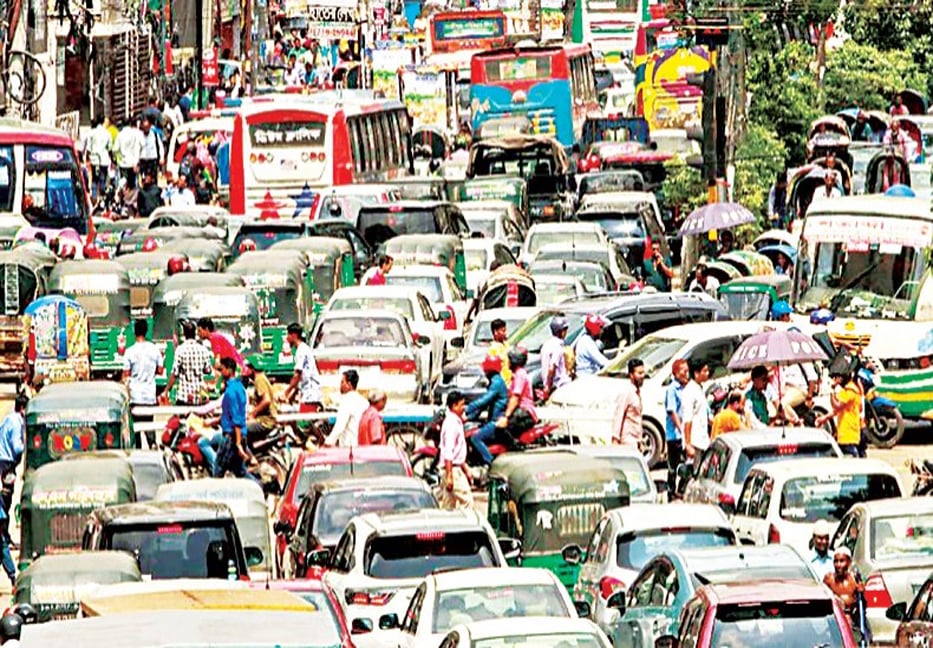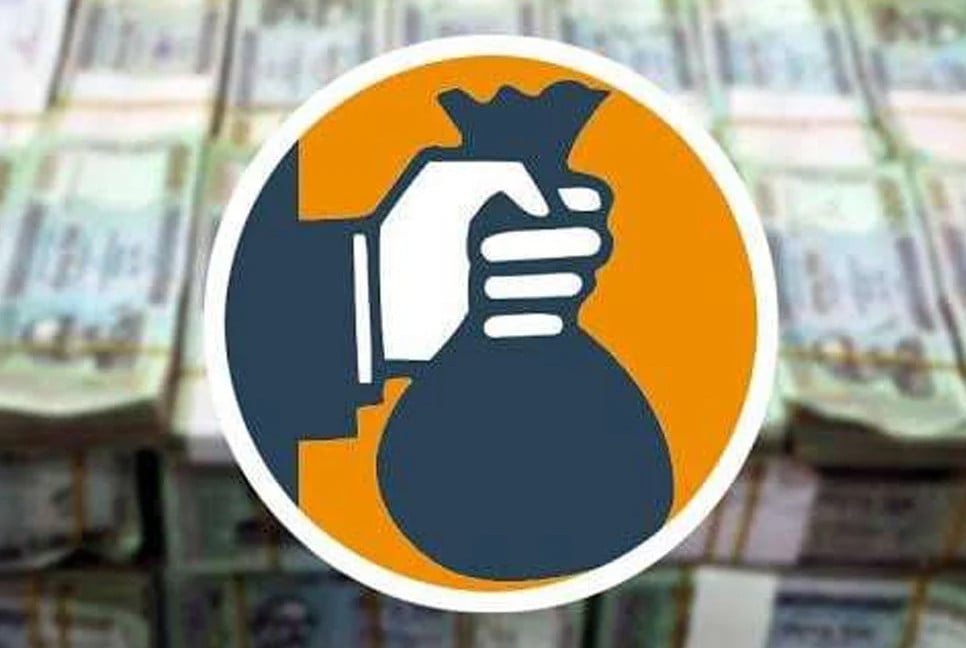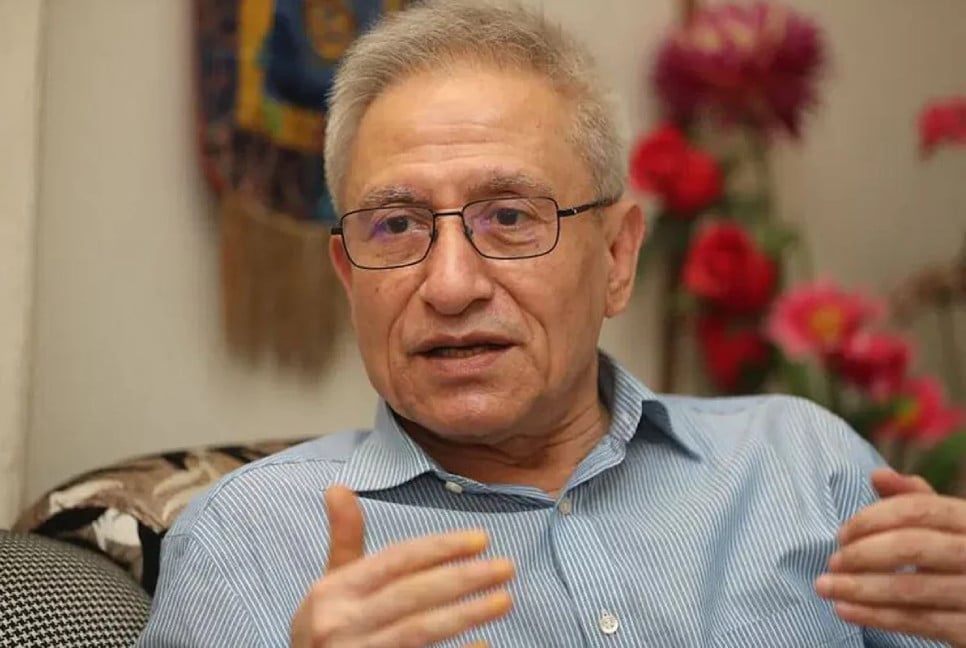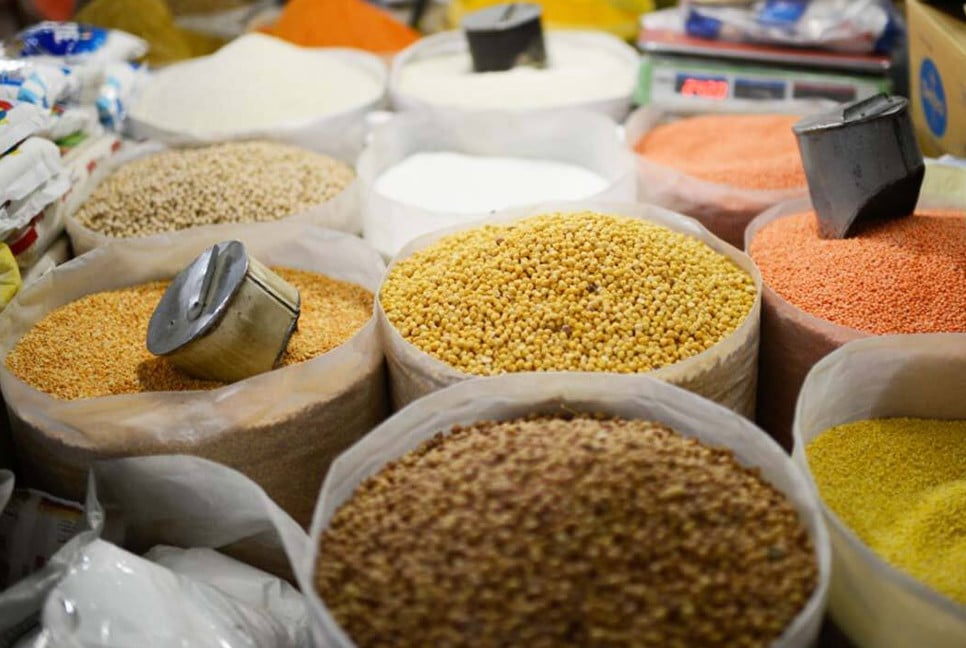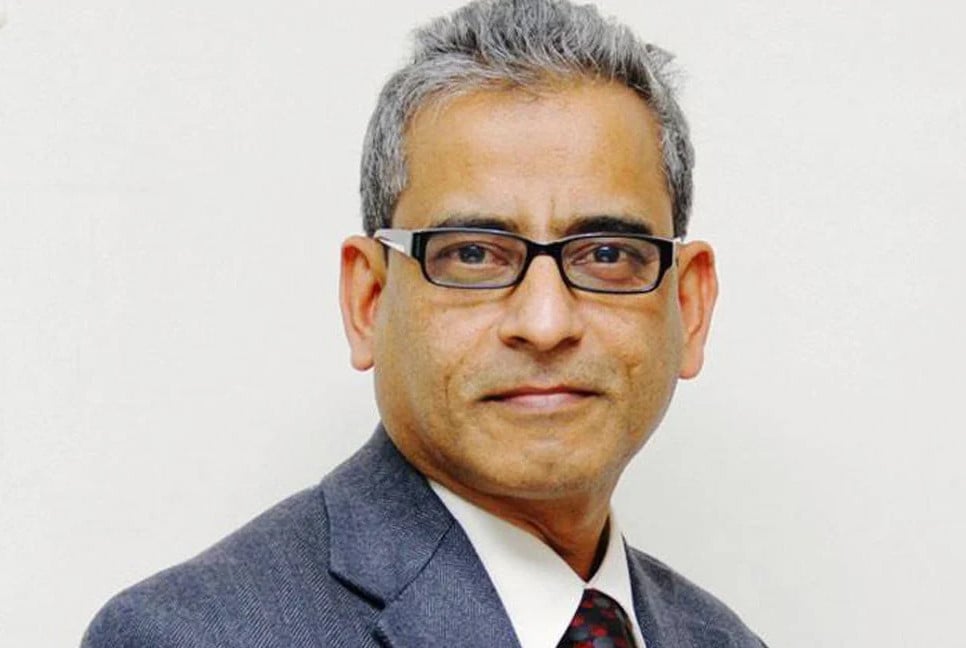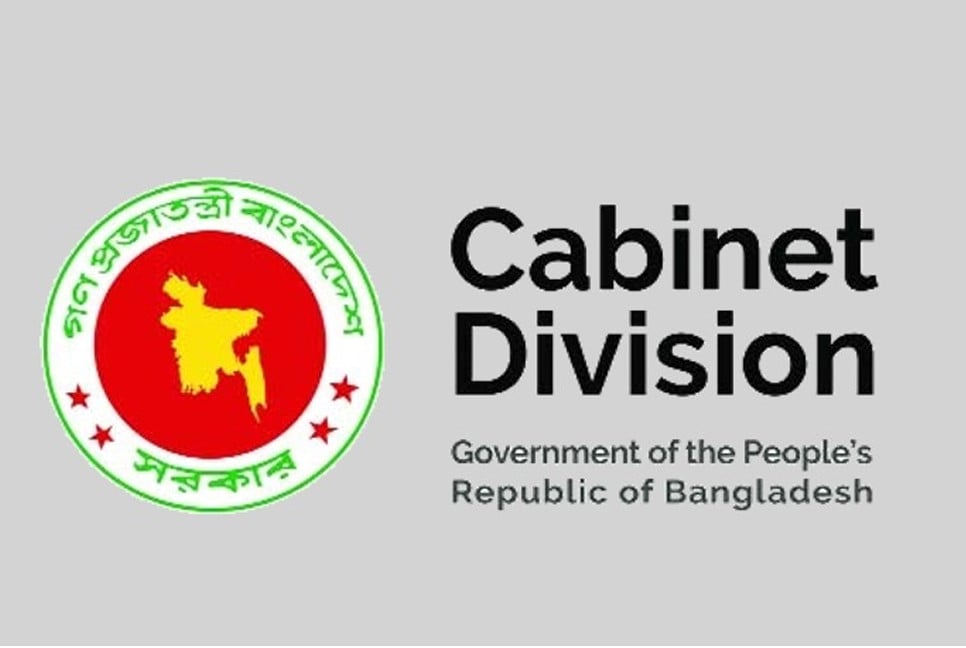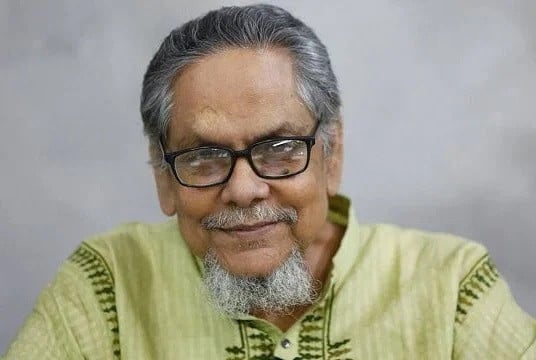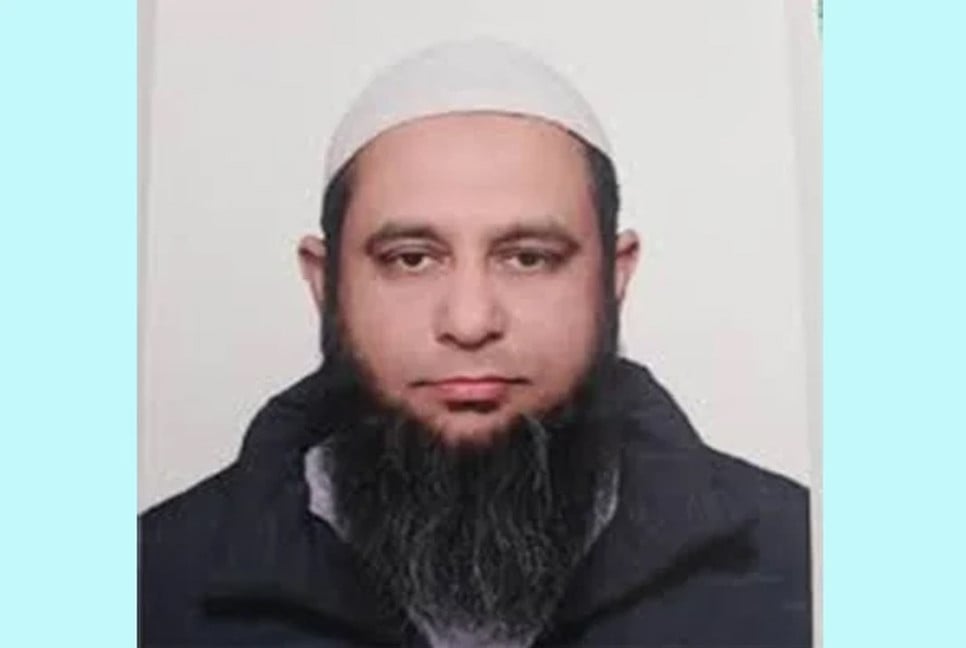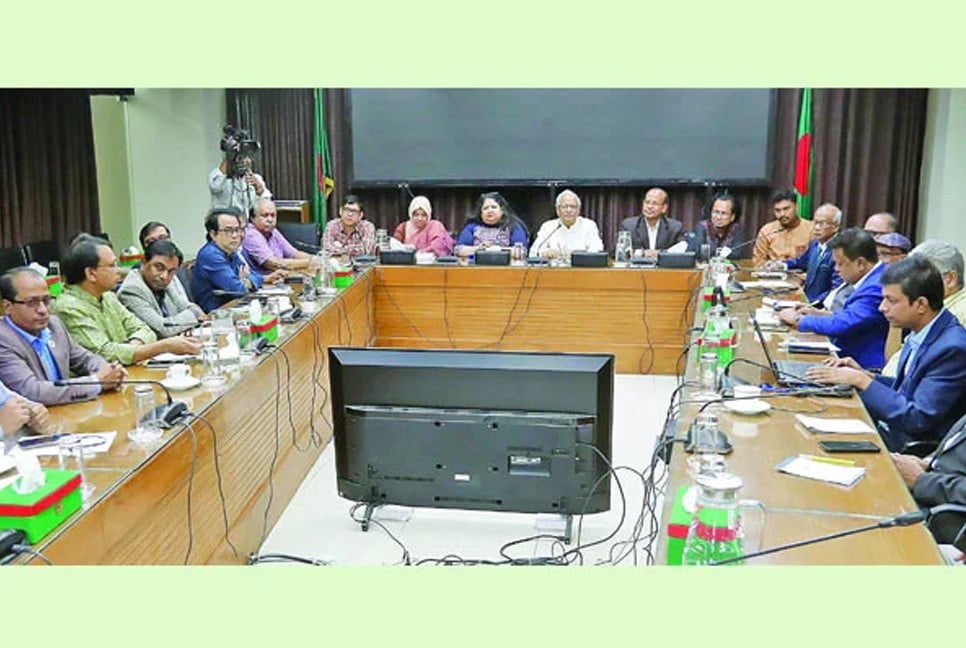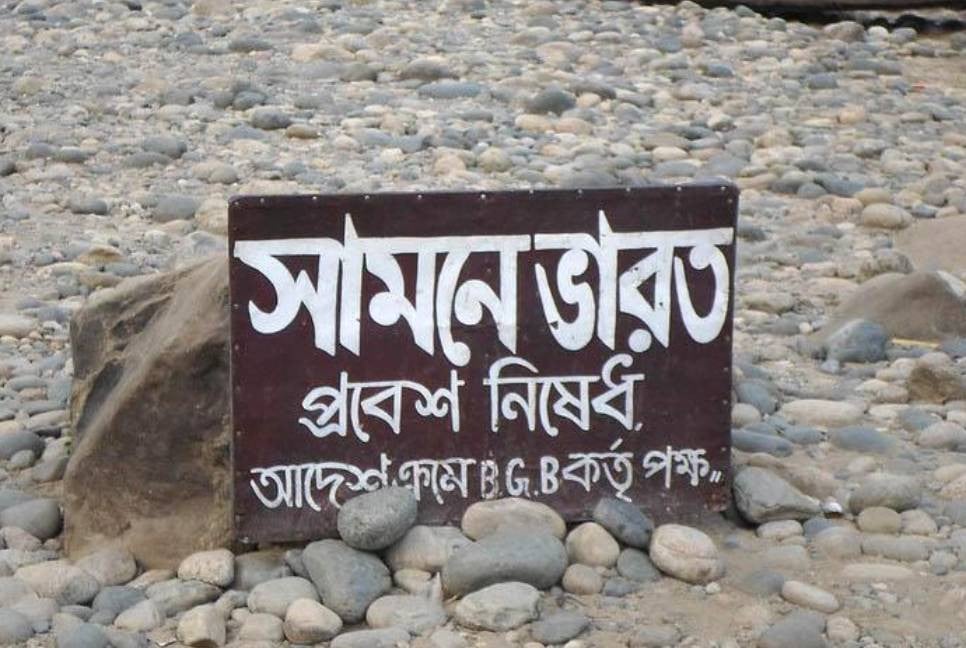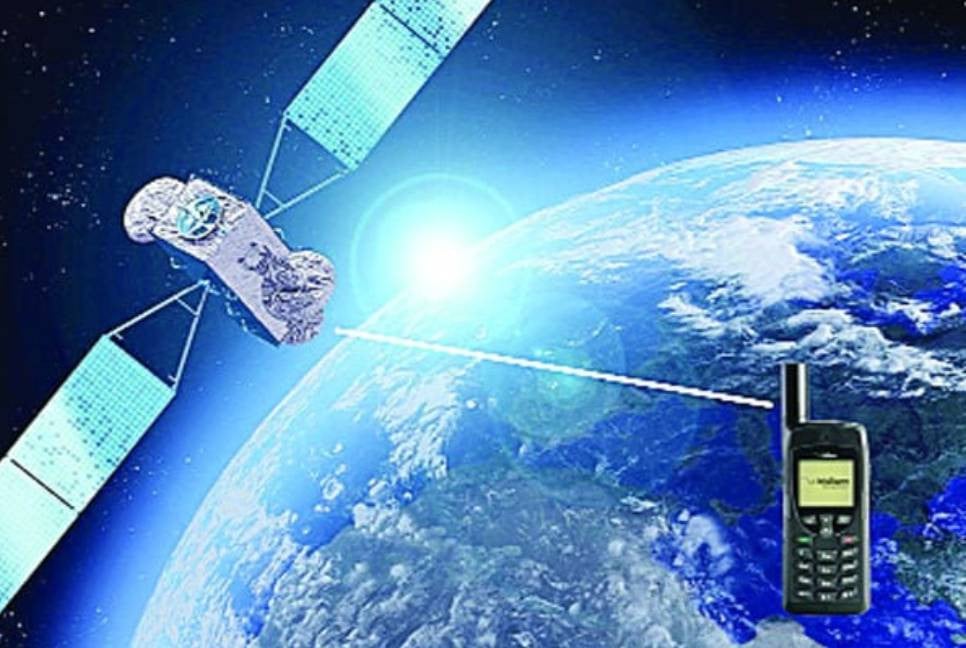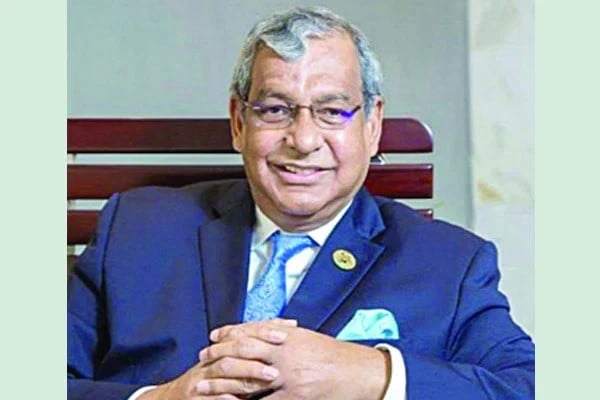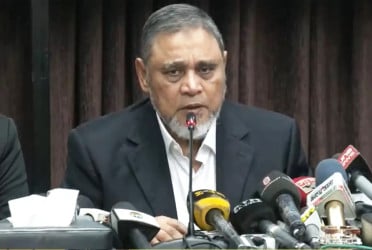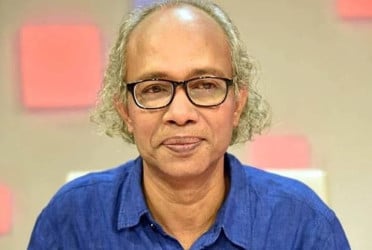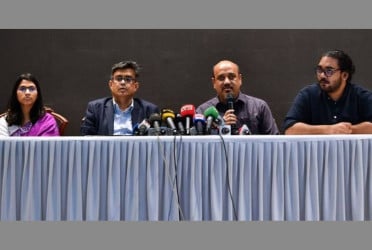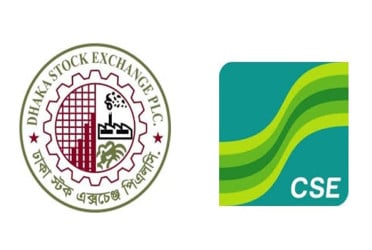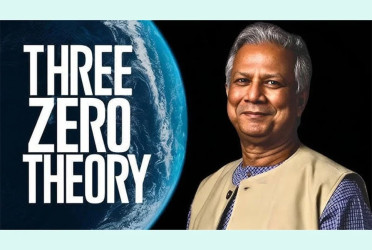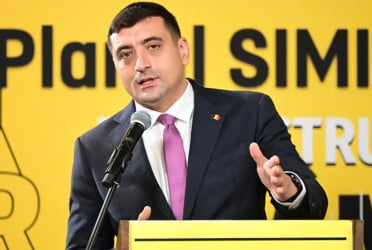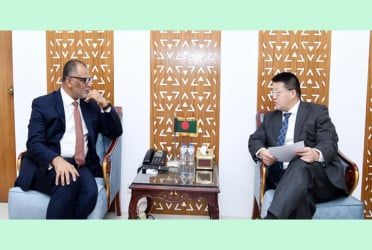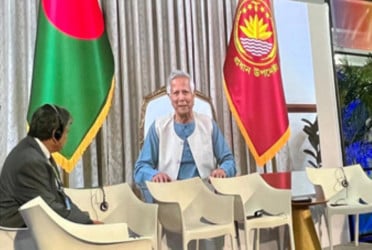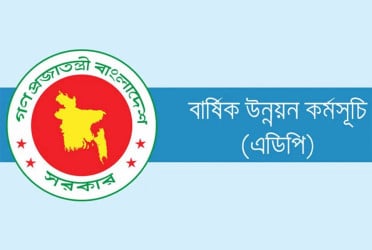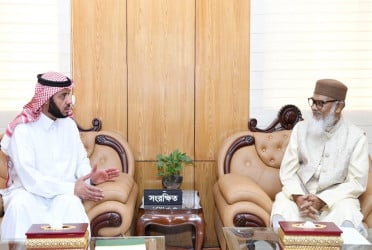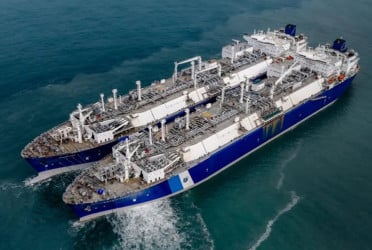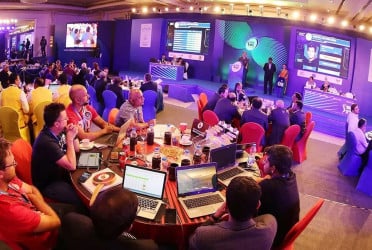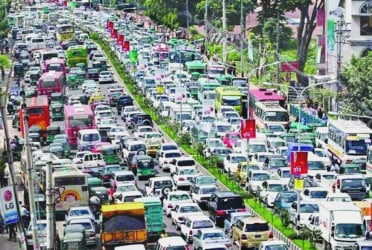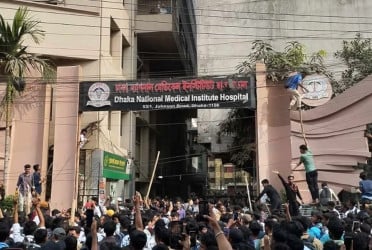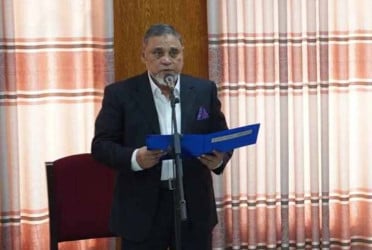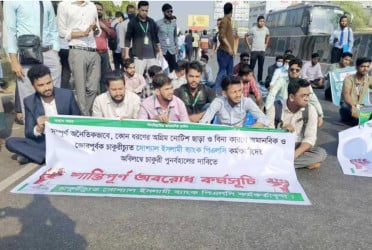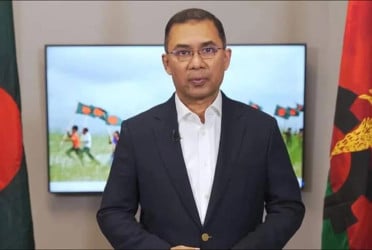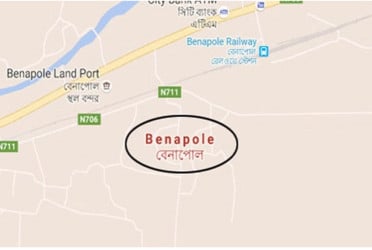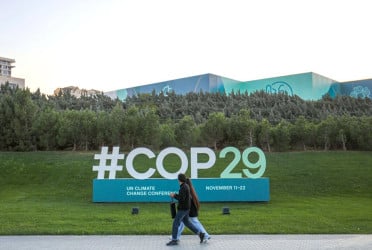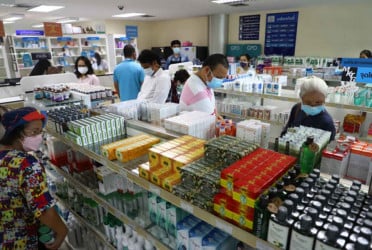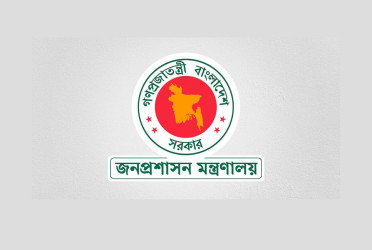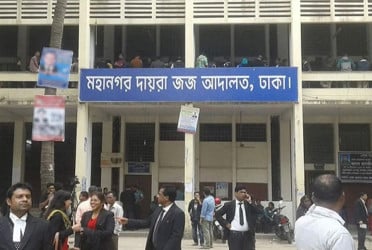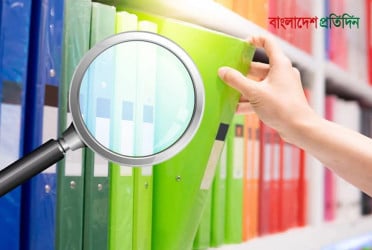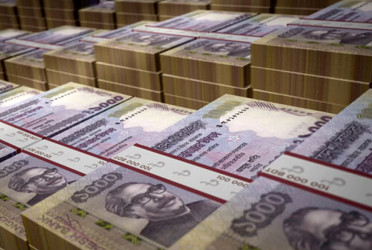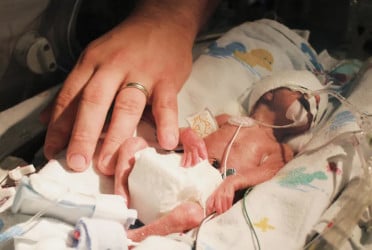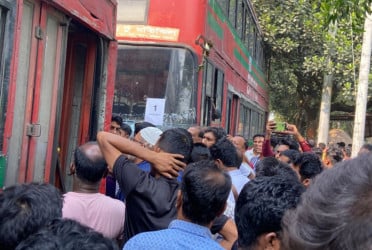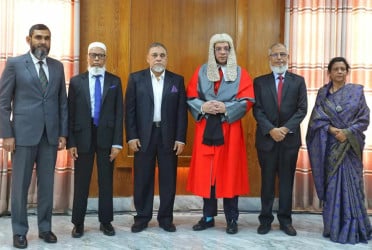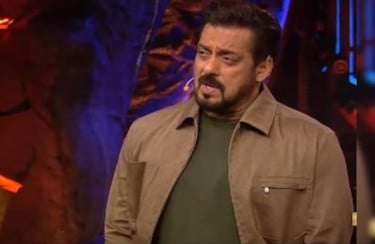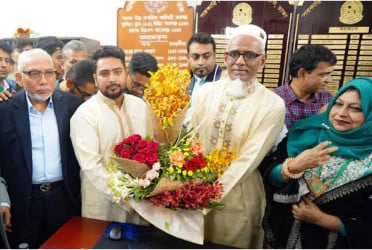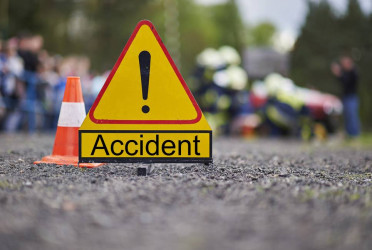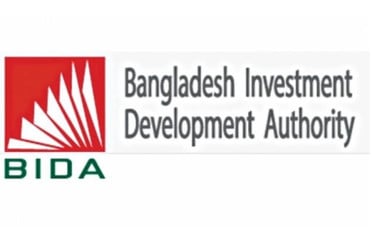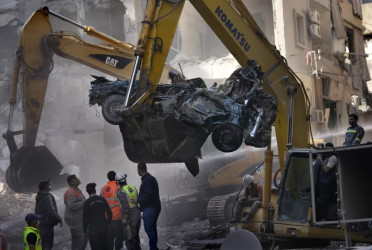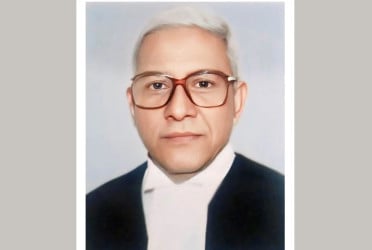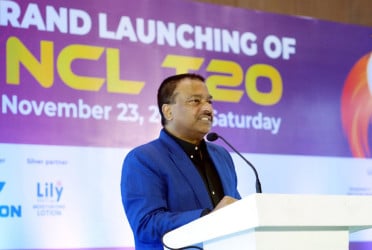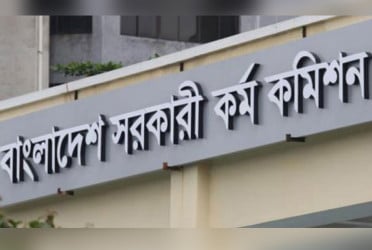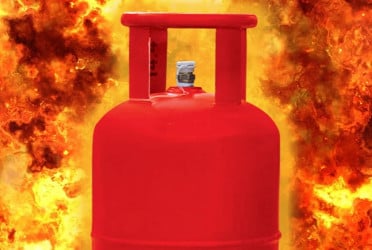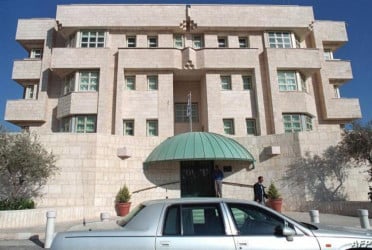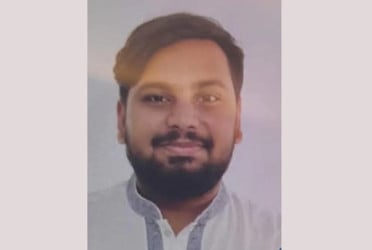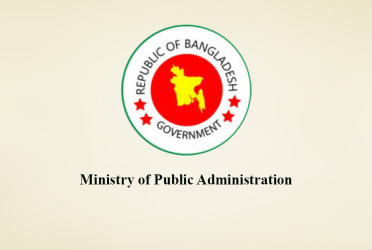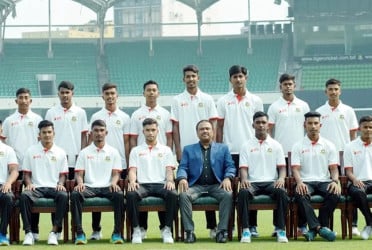Many success stories like metro rail, elevated expressway, bus rapid transit were added to the development schemes of roads in the capital Dhaka. However, the gridlock exists in the roads wasn’t solved yet as the traffic jam problem is still creating huge sufferings in city life. The half of the work hours of the citizens is being getting spoiled as they have to spend it badly on the roads.
According to the recent research of National Bureau of Economics of the US, among the 1,200 cities of 152 countries of the world, the slowest vehicle movement is observed in Dhaka. The gridlock on the roads has been affecting the economy very badly. But, why this suffering is not erasing from day to day to life in Dhaka?
In this regard, Shamim Ahmed, the senior reporter of The Bangladesh Pratidin talked to some experts in the field of city and urban planning. .
Former executive director of Dhaka Transport Coordination Authority (DTCA) and mass transport expert Dr. Saleh Uddin Ahmed said, “The city has been overloaded in all sides. Here the number of the roads is lesser than the needs, but the number of the vehicles is excessive. Nonetheless, the available vehicles are limited for the huge population. Sufficient roads for vehicles movement and its proper management according to the demand of huge number of inhabitants of the city are absent in Dhaka. To make the city speedy, it’s necessary to fix the number of the vehicles and reduce the number of people. The authority concerned should take steps regarding increase the number of quality transport and decrease personal vehicles. Otherwise, even making flyovers, underpass, elevated expressway in each area won’t solve the problems.”
He said to The Bangladesh Pratidin, “There are not enough roads that can accommodate increasing number of buses. The city roads are already packed with tens of thousands of rickshaw along with battery-driven ones. This is happened as there’s not sufficient mass transport. So, it’s high time the authority took steps to make proper planning about the vehicle movement and its expected number. It’s also necessary to reduce the number of people living in the city.
This city has 30-35 times more people per square kilometer than it should be. Instead of developing Dhaka tremendously, the satellite cities around Dhaka should be created on an urgent basis. Then people can go to these cities to work and live. Employment should be created in the villages. 30% of the traffic congestion will be reduced only by increasing the footpaths of Dhaka city to make it suitable for people's movement. Parking is a big problem here. Cars occupy the road. Ensure parking, determine the number of cars, clear the sidewalks, increase activity in satellite cities outside Dhaka— only then it is possible to make Dhaka dynamic. In addition, no matter how many plans are made, it is not possible to eliminate traffic congestion in Dhaka.”
He said we are working on bus route rationalization. If the buses cannot be company oriented through route rationalization, then increasing the number of buses will not work positively. I am a member of that committee. It is lagging behind the pace it was supposed to be. The Prime Minister has approved the bus route rationalization initiative. If it is not done, then the road problem will not be solved. I think some people are not asking for bus route rationalization. But they will fail. Buses will be the only sustainable solution in our economy. However, to implement this plan, DTCA has to work more carefully.
Transport expert and former director of accident research Institute of BUET, Dr. Md. Hadiuzzaman said, “We want to make the roads more vibrate and active. But, the design of our roads are limited to just 50 kilometers per hour, where the rickshaws are moving with just a speed of 5 kph in front of buses and private cars. So, how the speed will be up in these roads.
He told Bangladesh Pratidin excess population is responsible for traffic congestion in Dhaka city. But, this view is not entirely correct. Even if a city has a large population, the speed will be good if there are more main roads or arterial roads. Traffic on the arterial road will run unimpeded. According to me there is no arterial road in Dhaka city. Apart from this, the footpaths of our main roads are occupied. Pedestrians are forced to come down the road. Public transport is creating chaos on the roads. Unfit vehicles are running. Due to these reasons the speed on the roads has become sloth. There are rivers around Dhaka, along with numerous canals inside Dhaka. If the waterways could be used, the pressure on the road would be reduced. In this case, Italy's Venice and the Netherlands are great examples. As much as we are increasing the road infrastructure by building flyovers, expressways, more vehicles are taking to the roads every day. In order to reduce traffic congestion, comprehensive planning should be done throughout the year. Kolkata once had more rickshaws than Dhaka, which are now reduced.They already had many versions of public transport. They have a tram. There are metrorails, circular rails from a long time ago. But in the last 10 years they have invested heavily in city buses. City buses like London now run in Kolkata. 54 to 60 percent of passengers there now use city buses. If there is good quality public transport, rickshaw passengers will also ride there. There are at least 10 times more unregistered rickshaws running under the political umbrella than registered rickshaws in Dhaka. They must be handed over.
Investment should be made in creating alternative employment for rickshaw pullers. Besides, registered rickshaws should be removed from the main road and taken down the side roads. It is also said in the traffic law. Still the rickshaws are running on the main road. Mechanical-non-mechanical vehicles moving on a single road will never increase in speed. However, along with rickshaws, public transport should also be increased. Otherwise people will be in danger. Traffic congestion cannot be controlled only by creating infrastructure as small vehicles are increasing more than that. At present, buses transport 40% of the passengers. This rate will increase further by providing good quality buses.
Professor of urban and regional planning department of Jahangirnagar University, Dr. Akter Mahmud said, “The main problem of Dhaka city is its indiscipline in all aspect. There’s no authority to look after it. Here the population density is larger than any other parts of the world and the infrastructure here is no match to this deep density. Many people say the number of roads in the city is limited. However, there’re many examples in the world where we see very well-panned road transport system with limited roads. The authority that’s needed to build up such transport system is absent here.”
He said to The Bangladesh Pratidin, “Here such an authority is needed who’s capable of making a coherent transport planning. DTCA was to be such an organization; however, they do the task of making plans, but don’t do the task of transport management. City corporations and BRTA don’t do either. The reckless approval of motorcycles and private cars is very alarming. But, we need to reactivate the mass commuters and a mass commuter stations should be located in each 800 meters. In addition, the proper segmentation of the roads along with the decision regarding which vehicles would run on which roads are needed to be fixed. But, none is concerned in this regard. BRTA only provides registrations to bus, trucks and other machine vehicles. DTCA is making transport planning, but they’re not very much strong and not been able to coordinate with other organizations in this field. We thought the bus rationalization or making company will be a great solution. Then, most people will travel by bus and very good quality, well managed buses will be available for them. This would solve the traffic congestion and reckless parking. Furthermore, the proper management of roads is needed where no hawker or reckless parking will be seen on the roads.”
(The report was published in Bengali on print and online versions of The Bangladesh Pratidin on October 19 and rewritten in English by Lutful Hoque)

